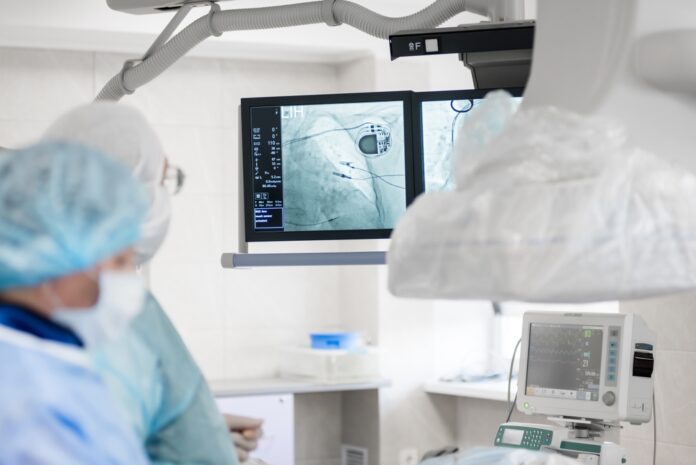The average human body expends a rough equivalent to 800 AA batteries of energy per day. But the body’s mechanical efficiency is only estimated at around 15 to 30 percent, meaning most of the energy we gain from food is released as heat.
At the same time, humans are increasingly in need of a safe, reliable source of power for the growing arsenal of implantable devices that researchers are developing to improve and save lives. At present, cardiac pacemakers, implantable defibrillators, neurostimulators, drug delivery systems, and bone growth generators mostly rely on lithium-ion batteries, but these must be replaced surgically when they run down, risking infection or leakage that can harm patients and cost money.
To solve the problem, researchers around the world are working to develop implantable generators that will harvest energy from our bodies, and they hope these will power a new generation of devices.
Energy Harvesting in the Body
It may sound like a science fiction crossover between the Matrix and the Fantastic Voyage, but miniaturized, implantable energy harvesters have been on the horizon for some time. The devices rely on the same thermal, kinetic, and chemical methods we use in energy production more generally.
Since our bodies waste so much energy as heat, implantable thermoelectric generators (TEGs) have been of particular interest. Like other TEGs, these would work by converting the temperature difference between a hot and cold surface into electricity, but there are challenges.
“Developing implantable TEGs involves balancing crucial factors like biocompatibility, hermeticity, miniaturization, and manufacturability, with biocompatibility being the absolute priority,” says Yongchen Rao from the Jade University of Applied Sciences in Germany, who works on these generators. “These factors can have conflicting demands. For example, while titanium offers excellent hermetic sealing, its high thermal conductivity reduces TEG efficiency.”
Because the temperature difference between two sides of a miniature generator inside the body would be especially small, there are also concerns about how much power it could provide. This is something that Rao and his colleagues are hoping to overcome.
“Future breakthroughs in thermoelectric materials, such as biocompatible options with improved efficiency, or advances in packaging technology could significantly boost the performance of implantable TEGs,” he says.
Read More: Scientists Are Making Self-Powered Implants to Restore Touch in Nerve Damage Patients
Wearable Generators
The idea of wearable generators that produce electricity from the flexing of muscles or bending of limbs has been around for some time. But in 2018, researchers John Zhang and colleagues at the Thayer School of Engineering, Dartmouth, developed a prototype generator that used a cantilever design to produce electricity from the beating of the human heart, and demonstrated the device’s potential to power a pacemaker.
“This study implies that sufficient electrical energy can be converted from the kinetic energy of a pacemaker lead especially at low frequencies to sustain operations,” Zhang said in the study.
That’s not the only attempt researchers have made to harness the heart’s energy. Back in 2011, Alois Pfenniger and colleagues at the Bern University of Applied Sciences in Switzerland developed a miniature turbine designed to fit inside a human artery and generate power from the flow of blood much like a hydroelectric generator does from water.
In trials using tubes designed to mimic arteries, Pfenniger and colleagues could generate around 800 microwatts of electricity – substantially more than the 10 microwatts needed to power a pacemaker. There was, however, some concern that any device that slows the flow of blood could give it a chance to coagulate, potentially leading to dangerous blood clots.
There are also efforts to generate electricity from the body’s chemical energy. Earlier this year, a team led by Xizheng Liu from Tianjin University of Technology in China successfully tested an implantable self-charging battery that uses a sodium-based alloy for its anode, and oxygen sourced from fluids in the body for its cathode. Implanting the battery into the backs of rats, they found it was both stable and biocompatible.
“Our Na-O2 battery revolutionizes the concept of implantable batteries,” Xizheng Liu and co said.
Read More: How Do Pacemakers And Defibrillators Work? A Cardiologist Explains How They Interact With The Electrical System Of The Heart
Harnessing the Power Within
While our bodies generate significant amounts of energy, any device intended to harness it can’t be allowed to interfere with our everyday functions. This means we can only expect to harvest milliwatts at best, but that’s still enough to power many of the implantable devices in use today.
The science of energy harvesting implants is still in its early stages. But the constant development of new materials and designs will likely improve the efficiency and biocompatibility of generators to the point that we’ll eventually be drawing power from our bodies for both implants and wearables.
“[These generators] hold significant potential due to the rise of the Internet of Things (IoT) and the increasing demand for long-lasting implantable medical devices spurred by an aging population,” says Rao.
When that happens, though, it’s conceivable that we won’t only be powering straightforward medical devices with these generators, but all manner of sensors, interfaces, in vitro devices, and other biohacking augmentations.
It might be a cliché, but it seems there really is a lot to gain by harnessing the power within.
Read More: Elon Musk’s Brain Chip Could Restore Vision and Mobility, But Has a Long Way to Go
Article Sources
Our writers at Discovermagazine.com use peer-reviewed studies and high-quality sources for our articles, and our editors review for scientific accuracy and editorial standards. Review the sources used below for this article:
Source : Discovermagazine













